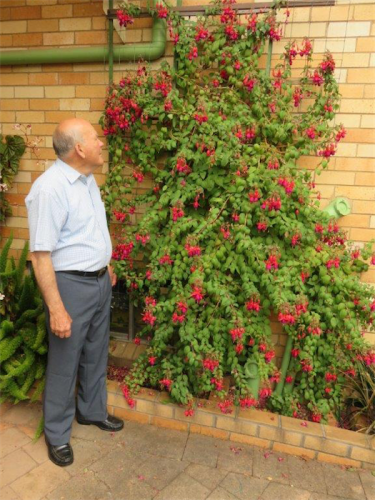
MAYBE it’s a strange time to talk about fuchsias, when in only a few weeks their leaves will fall.
But it is a great time to see them in full flower in garden centres and, secondly, it’s an ideal time to take cuttings.
Fuchsias strike readily from cuttings when taken at this time of the year. In spring, the stems are very soft and brittle with all the energy going into new growth and flowers. In autumn, the stems are thicker and have hardened off. Plant the cuttings in a 50/50 mix of washed river sand and perlite or coco peat and keep the mix moist at all times in a shady spot in the garden. Better still if you have a greenhouse.
When the roots have developed, pot up into a premium-grade potting mix and immediately start a regular feeding program. Finally, do not prune back the bare stems in winter. Wait until spring when the new shoots appear and at that time cut off any dead branches.
Fuchsias originated in South and Central America and NZ. They were introduced into the Western world by 18th century missionary Father Plumier, who named the plant after Dr Leonard Fuchs, an eminent 16th century botanist.
The ideal planting position will have morning sun to about 10am and then filtered shade for the rest of the day. Fuchsias are popular in hanging gardens combined with ivy geraniums. In the garden, the soil should be well prepared with added organic compost or cow manure. Mulch well after planting and apply a seaweed plant nutrient to promote strong root growth.
Fuchsias must never be allowed to dry out, vital when in hanging gardens or pots. On hot days, a fine spray of water during the day is especially beneficial.

SNAILS are on the move, chomping on the emerging leaves of my polyanthus. I have always liked the comment of David Young, former ABC gardening presenter, suggesting the best way to deal with snails without using snail bait: put your foot on them and if you are squeamish put shoes on first!
Jottings…
- Collect seeds from perennials by placing a brown paper bag over the flowers as they start to die off (never a plastic bag) and tie round the stem of the plant. Use a waterproof Texta to label the bag.
- As with fuchsias, it’s an ideal time to take cuttings of geraniums and pelargoniums.
- Keep dead heading dahlias and salvias to keep them flowering until the first frosts.
Who can be trusted?
In a world of spin and confusion, there’s never been a more important time to support independent journalism in Canberra.
If you trust our work online and want to enforce the power of independent voices, I invite you to make a small contribution.
Every dollar of support is invested back into our journalism to help keep citynews.com.au strong and free.
Thank you,
Ian Meikle, editor




Leave a Reply